Abstract
The effect of leaf-air vapor pressure difference (VPD) on the magnitude of the stomatal response to blue light was investigated in soybean (Glycine max) by administering blue light pulses (22 seconds by 120 micromoles per square meter per second) at different levels of VPD and temperature. At 20 °C and 25 °C, the magnitude of the integrated conductance response decreased with increasing VPD (0.4 to 2.6 kiloPascals), due to an earlier onset of stomatal closure that terminated the pulse response. In contrast, at 30 °C this magnitude increased with rising VPD (0.9 to 3.5 kiloPascals), due to an increasing maximum excursion of the conductance response despite the accelerated onset of stomatal closure. When the feedforward response of stomata to humidity caused steady state transpiration to decrease with increasing VPD, the magnitude of the pulse-induced conductance response correlated with VPD rather than with transpiration. This suggests that water relations or metabolite movements within epidermal rather than bulk leaf tissue interacted with guard cell photobiological properties in regulating the magnitude of the blue light response. VPD modulation of pulse magnitude could reduce water loss during stomatal responses to transient illumination in natural light environments.
Full text
PDF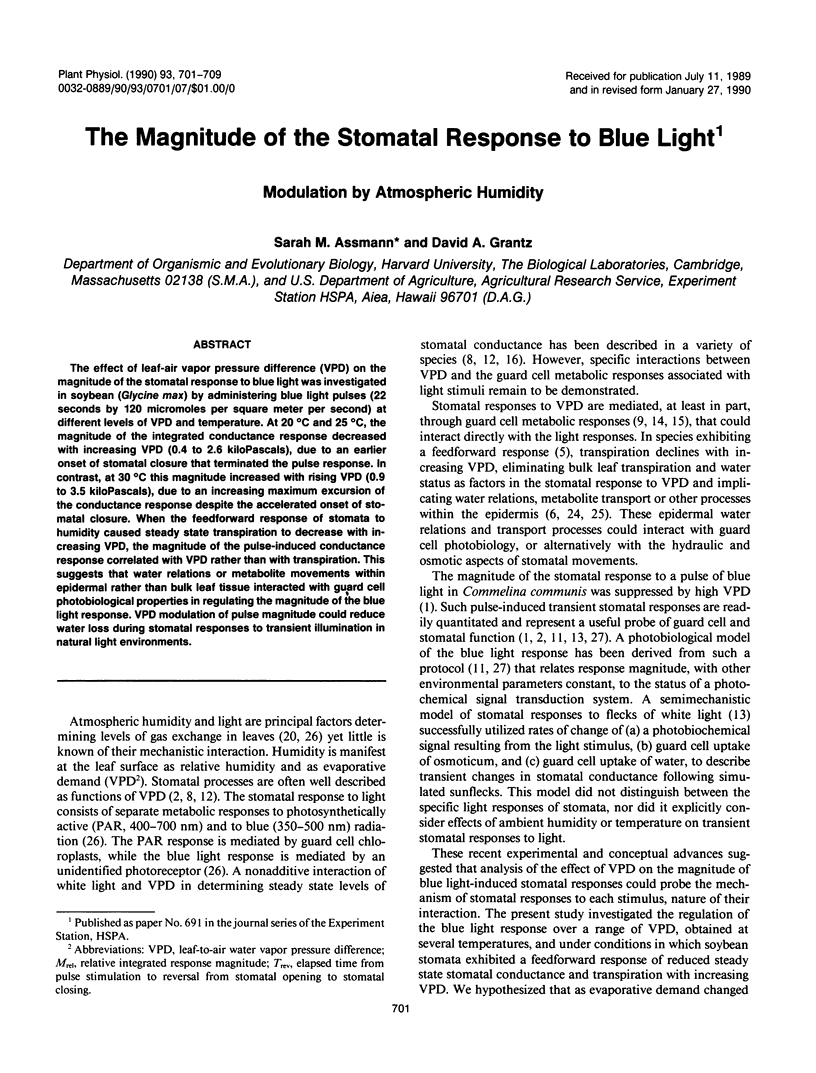
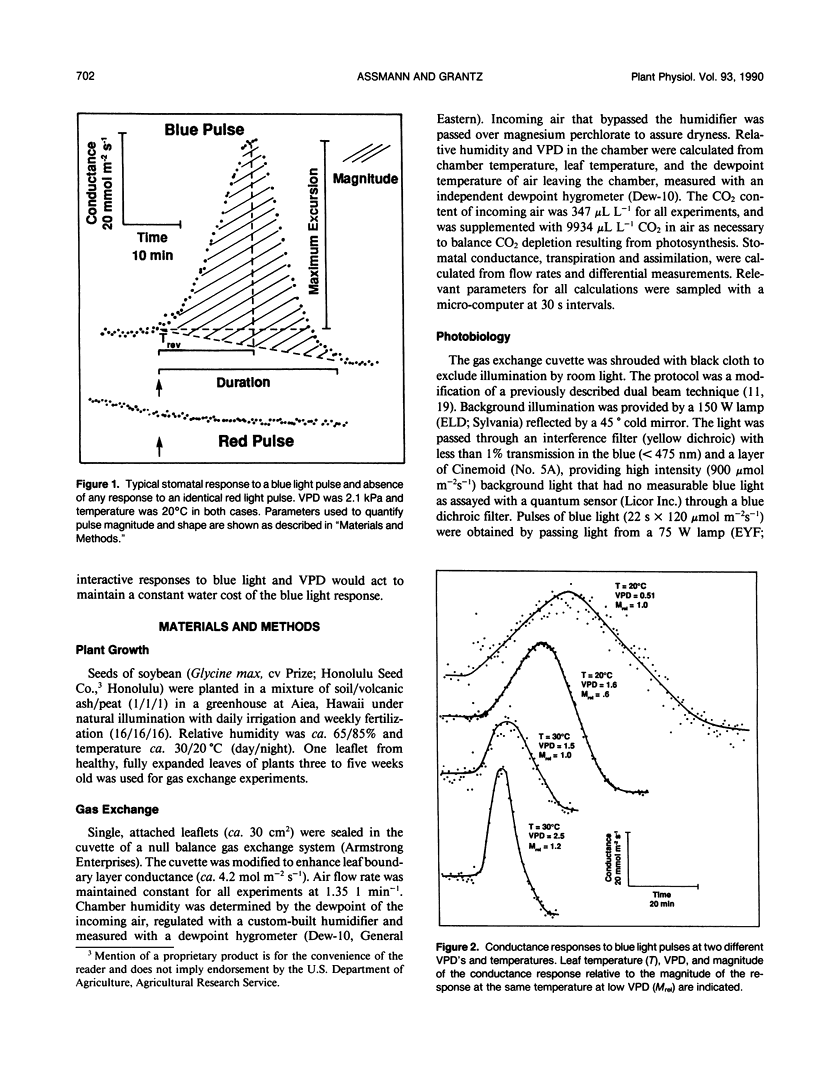
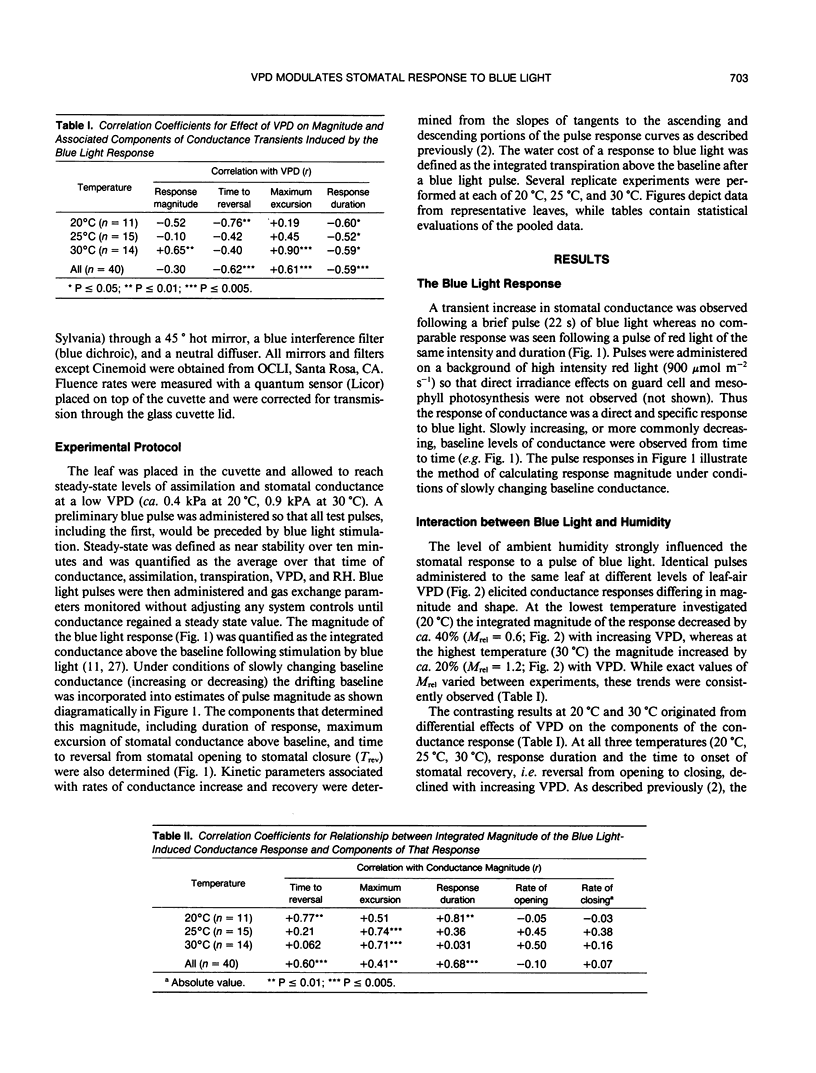
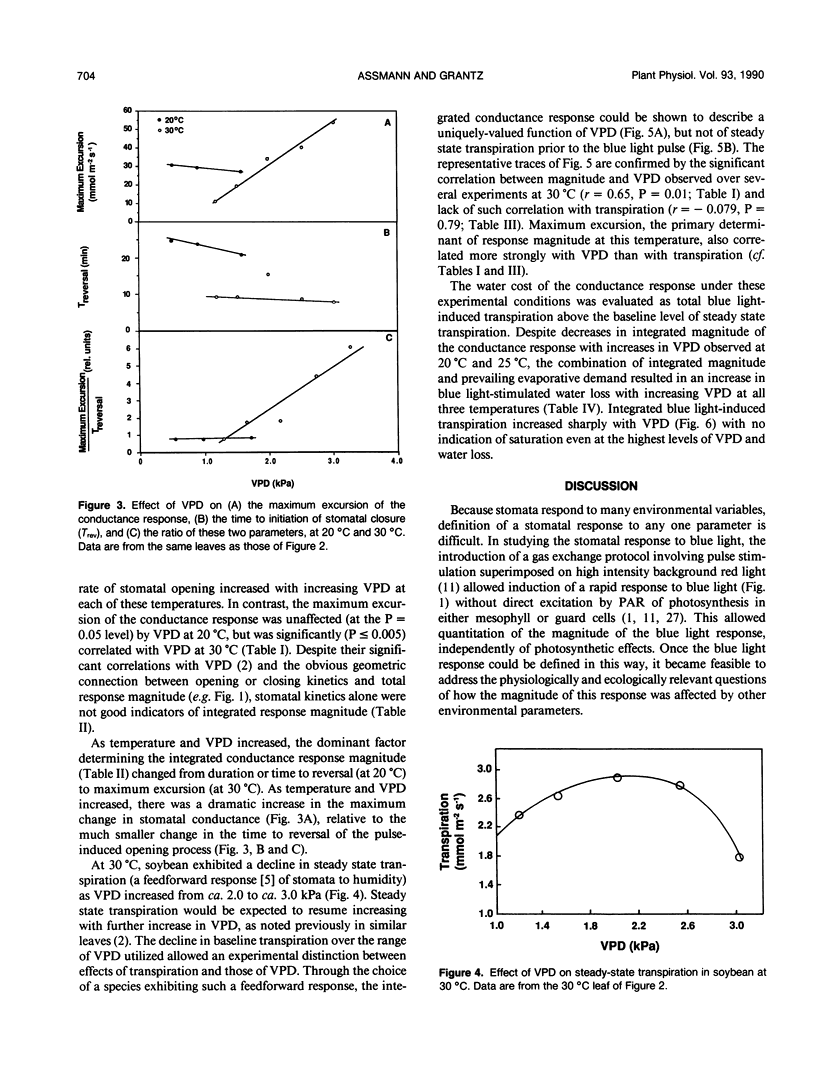
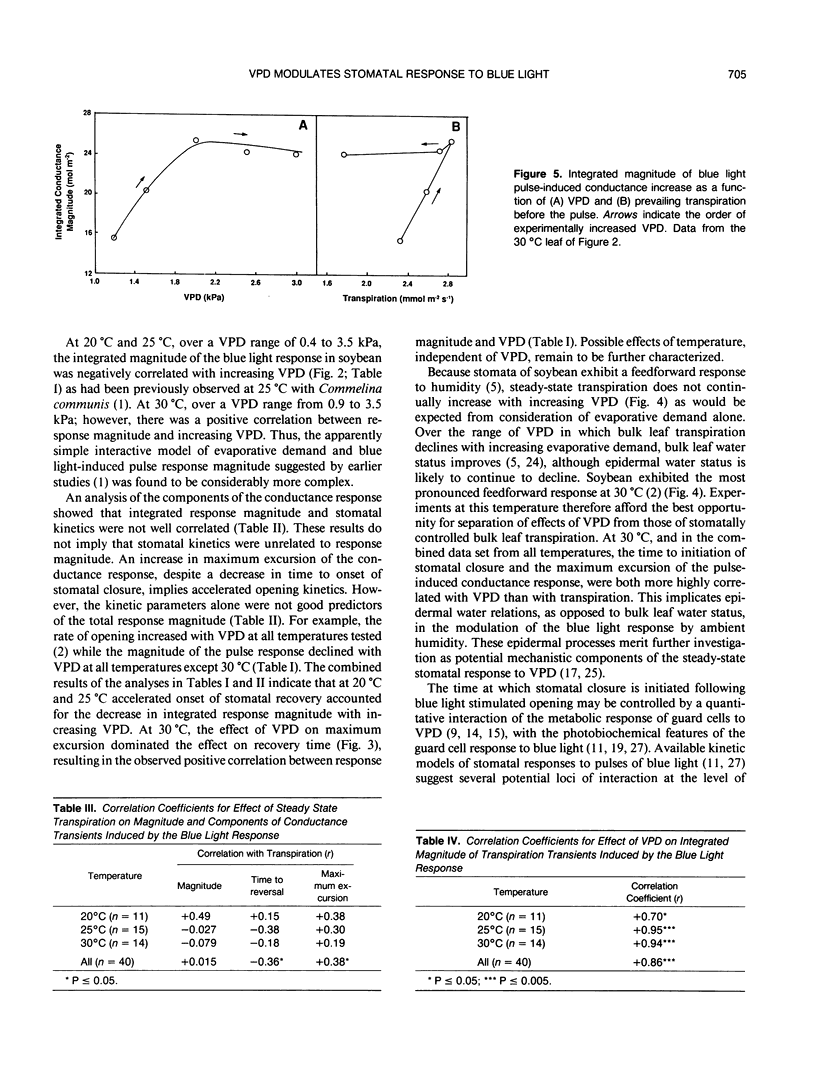
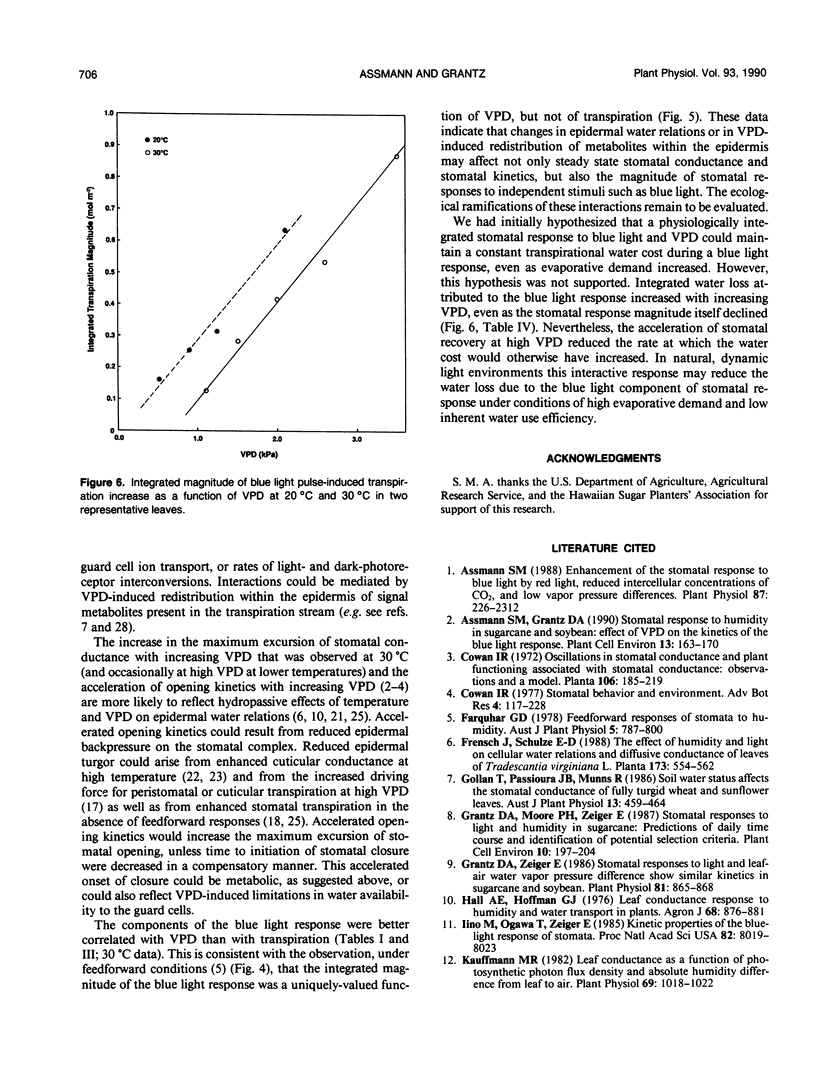
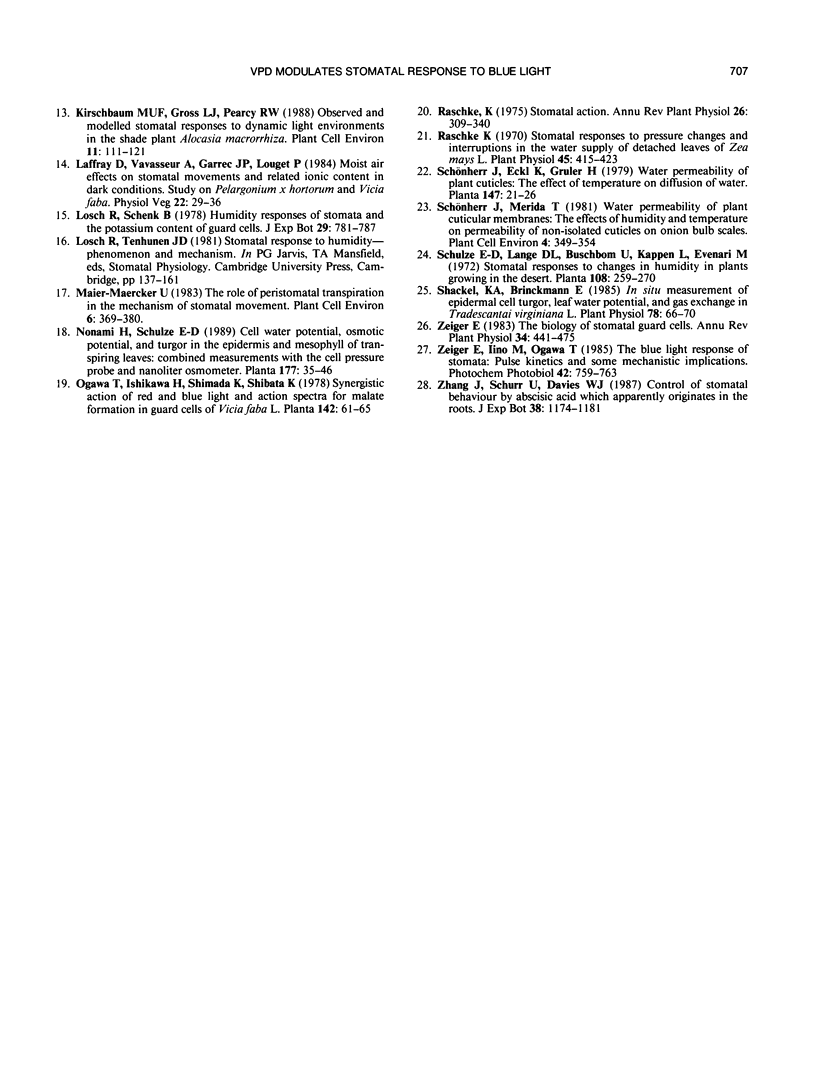
Selected References
These references are in PubMed. This may not be the complete list of references from this article.
- Assmann S. M. Enhancement of the Stomatal Response to Blue Light by Red Light, Reduced Intercellular Concentrations of CO(2), and Low Vapor Pressure Differences. Plant Physiol. 1988 May;87(1):226–231. doi: 10.1104/pp.87.1.226. [DOI] [PMC free article] [PubMed] [Google Scholar]
- Grantz D. A., Zeiger E. Stomatal responses to light and leaf-air water vapor pressure difference show similar kinetics in sugarcane and soybean. Plant Physiol. 1986 Jul;81(3):865–868. doi: 10.1104/pp.81.3.865. [DOI] [PMC free article] [PubMed] [Google Scholar]
- Iino M., Ogawa T., Zeiger E. Kinetic properties of the blue-light response of stomata. Proc Natl Acad Sci U S A. 1985 Dec;82(23):8019–8023. doi: 10.1073/pnas.82.23.8019. [DOI] [PMC free article] [PubMed] [Google Scholar]
- Kaufmann M. R. Leaf conductance as a function of photosynthetic photon flux density and absolute humidity difference from leaf to air. Plant Physiol. 1982 May;69(5):1018–1022. doi: 10.1104/pp.69.5.1018. [DOI] [PMC free article] [PubMed] [Google Scholar]
- Raschke K. Stomatal Responses to Pressure Changes and Interruptions in the Water Supply of Detached Leaves of Zea mays L. Plant Physiol. 1970 Apr;45(4):415–423. doi: 10.1104/pp.45.4.415. [DOI] [PMC free article] [PubMed] [Google Scholar]
- Shackel K. A., Brinckmann E. In Situ Measurement of Epidermal Cell Turgor, Leaf Water Potential, and Gas Exchange in Tradescantia virginiana L. Plant Physiol. 1985 May;78(1):66–70. doi: 10.1104/pp.78.1.66. [DOI] [PMC free article] [PubMed] [Google Scholar]


